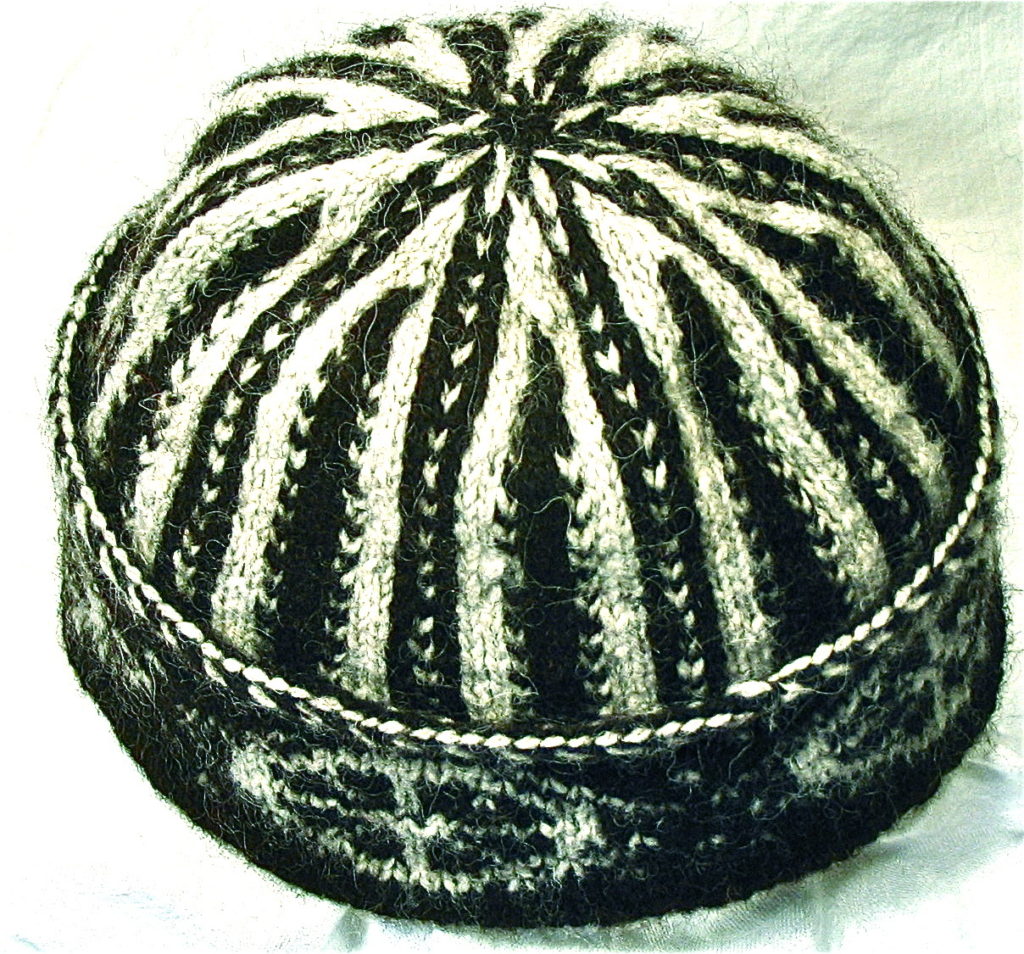
It may be tiny, but the island of Gotland is located in the middle of everywhere when it comes to knitting.
On the map, the island appears as a small dot in the lower center of the Baltic Sea, surrounded by modern-day Denmark, Sweden, Estonia, Latvia, Lithuania, Poland, and Finland. If a boat were to sail from St. Petersburg, navigate the straits between Finland and Estonian to trade with the rest of the world, it would run right into Gotland on its way south. This gives Gotland a rather central position with respect to trade and politics.
Its coat of arms features a white-fleeced ram with curving horns. This is only the first hint of the importance of sheep and wool to this area. The lamb and the cross affirm a strong Christian history, but the island’s culture and relationship to sheep goes back much further.
The Gutefår sheep (that we know as the Gotland breed) were originally thought to have been brought to the area during the Stone Age. The history of the breed presents a fascinating slant on the Vikings, who followed the Goths in their conquests from the Northern lands south and west as far as Britain in what is known as the Norman Invasion of 1066. A practical bunch of marauders, they brought their sheep with them on their ships as they swept through others’ territories in order to have a self-sufficient source of meat and fur on their trips.
It is hard to say how knitting came to be so important on the island, but historians note a large number of Arab coins on the island. This fits the theory that knitting followed the trade routes from Arab lands westward. According to textile histories of Gotland, knitting was a part of life and identity. Yarn was gathered (and later sheared) in the spring and spun over the colder fall months. Men, women, and children all knit. The most common motifs they used – rose and vine patterns – identified them as Gotlanders. The ivy signified fidelity for the tenacious way it clung to the rocks.
The lives of the Sweaterhags have been described elsewhere for modern readers but, in short, these where intrepid trader women who, in the 1800s, braved the sea to collect knitted items from all over Gotland and take them to market to Stockholm on the mainland to sell at the market at Visby.
As with other northern knitting cultures, there were clear customs and rules about knitting – how to knit, when not to knit, and what constituted great skill in the knitting. For example, Gotlanders believed that a knot inside the garment would bring bad luck to its wearer, as would likewise a pattern that wound counterclockwise. Knitting parties were held during the special knitting holidays between Christmas and Epiphany. It was thought that spinning during that time would harm the sheep for the coming year, so men, woman and children gathered together to knit during the darkest time of the year.
Gotland Coat of Arms
The Gotlandic flag dislays the Gotlandic coat of arms, dates from the 13th century and is accompanied by the text: “Gutenses signo xpistus signatur in agno” (I am the sign of the Gotlanders, but with the lamb, symbolize Christ).

